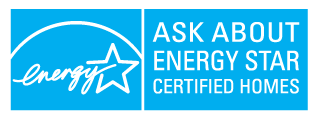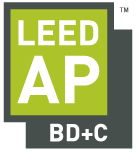It's Not Easy Being Green
You can't stumble into building green
As soon as Kermit the Frog sang “It’s Not Easy Being Green” on national T.V., this phrase entered our pop culture and has been used and overused ever since. But, it does fit with the topic of Green Building and Greenwashing. Green Building is synonymous with sustainable or environmental building. Whereas greenwashing is merely jumping on the bandwagon and using keywords & tricky phrases so marketers can make something appear to be environmentally friendly when it’s actually not.
One example of greenwashing is when a manufacturer states that its product contains a certain percentage of recycled material…but that material is actually just the standard procedure of reusing material from the manufacturing process…it’s not really green. In recent years, manufacturers have begun telling us how much post-consumer recycled material is being used, and this is a much better indicator of an environmentally friendly product.
Likewise with houses. Sometimes a builder will use a single environmental strategy in the home and call it a “Green House”. But if the rest of the house uses traditional building methods with little regard to environmental impact, the house is far from being green. The house may be loaded with Volatile Organic Compounds, VOCs, from adhesives, paint, and wood products. Or maybe it uses materials made with harmful practices, but still, the builder labels the house “green” because of the one product that was used. While any environmentally considerate tactic is better than none, employing one tactic and then using it to color the whole house with green marketing is a prime example of “Greenwashing.”
A sustainable home needs to have a holistic approach to its construction. Using a single environmentally conscience product shouldn’t be used to offset another poor environmental choice. There are always cases of give-and-take, but the overall strategy should be intentional. For instance, a home buyer may not be able to afford the top-of-the-line air conditioning unit that uses heat exchangers to preheat/precool incoming fresh air, but they can use a programmable thermostat to control their affordable, energy-efficient HVAC unit to maximize comfort while controlling energy use. This buyer can also insist that quality doors & windows are installed and that they seal well to prevent drafts. This too will reduce the run time of the HVAC unit. So too does the choice of lights. As incandescent lights are being phased out, this buyer should consider using LED lights that don’t produce as much heat, thus reducing the amount of summer cooling needed. A well-designed green home functions as an integrated system and when you intentionally consider all the components together, you can design and build a home that matches your environmental values without breaking the bank.
A green home doesn’t need all the expensive bells and whistles. A green home needs to be designed from the beginning using a whole-house, environmentally sustainable strategy. In a previous article, What is an Environmentally Sustainable Home, I talked about using material purchases to impact the sustainability of a home; this is but one tactic to use in the overall process of building a home.
What is a green home, really? Well, I guess that depends on the individual as it can mean many things. At Choice Builders, it means a holistic and collaborative approach to building. It means taking care to ensure the home reflects the values of the people living in it. That indoor air quality is high because only products with low VOCs are used. It means an abundance of natural light so the use of lights during the day is limited and because daylight is healthy. It also means taking care to ensure windows and doors function and seal properly, that the home is well insulated and sealed from drafts. The list of our green features and practices in our homes is extensive…some of those environmental practices are noticeable, while others are choices and methods we made and used during construction to minimize the overall environmental impact.
It really isn’t easy being green: you can’t stumble upon it, it needs to be deliberately planned. At Choice Builders we are intentional with our environmental choices and we can help ensure your home is designed from the beginning to truly be a Green Home.
DON’T TRUST YOUR DREAMS TO JUST ANYONE.
You should feel confident and excited during your home-building process. After all, the builder you choose could mean the difference between a project that's done right, on time, and on budget and one that costs too much, takes too long, and is fraught with quality problems.
But with every builder claiming to be qualified, how can you be sure you’re picking the right one?
Download What You Need to Know Before Hiring a Home Builder, written by Choice Builders’ owner, Roger Thomas. This guide will help you choose a builder who is right for you.
In it, you'll find answers to questions like:
- How do I make sure a contractor can build to my budget?
- Why do some contractors appear to cost more than others do?
- Should I ask for a “free” estimate?
- How do I choose a good contractor, let alone the best one?
- How should I compare prospective contractors?
With this download request, you are giving Choice Builders permission to email you information about building a home.









.png)

